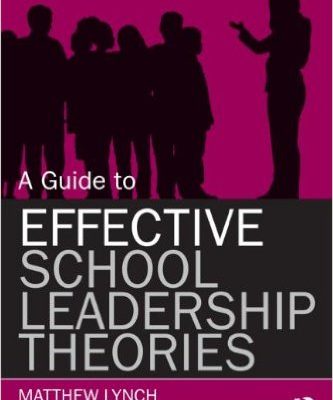Fiction Teaches Kids to Read—and to Live

An author of children’s and young adult books celebrates the value of fiction for building empathy, combatting bullying, and preparing kids for real-life challenges.
By Michael Dahl
I grew up in a house full of books, and I read everything I could find. My mom and dad read a lot, too. My mom and I would even read the same comic books, and afterwards she would ask what I thought about the story. These discussions with my mother taught me that even the most “juvenile” of reading materials still had value and could be read critically, just like any literature.
One thing I love about writing (and reading) children’s fiction is that it’s so optimistic. The characters are admirable, good is rewarded, and there’s this sense of innocence and wonder that reflects what children are like as a readership. They engage so intensely with the stories they read, because they’re still eager to learn and excited about reading. That’s how I know that fiction can make a difference when teaching children how to treat each other. When children see our diverse world displayed in the fiction they read, they learn that we’re all not that different from each other.
Fiction Is a Window into Another Life
When you read, you become another person, if only for a short while. You see how that person lives, how they think. You experience their hopes and fears, and you see how they’ve come to be who they are. If you read five different books, you have a window into the lives of five different people. That’s what empathy is: to feel for that other person, and it opens you up to different experiences you may never have otherwise been able to experience. There have been numerous studies showing that people who read fiction have increased empathy. This is why fiction is one of the most powerful tools we have to combat bullying and intolerance.
When you see the world through another person’s eyes, you realize how similar you are to them, even if that person might seem very different from you. If the hero of a story is poor, or bullied, or nerdy, or a refugee, you imagine what it’s like to be that kind of person, and you remember that next time you meet a person like that in real life. If there’s a kid in your class who wears shabby clothes, you may remember how Harry Potter had to sleep underneath the stairs, so maybe this kid is like that too, and just like Harry, there’s probably more to him than his outward appearance.
Fiction Shows Us How to Live
In a way, reading is practice for real life. There’s safety in reading. Kids self-censor when reading a scary book. They know they can close it at any time. Through reading, they can control their exposure to things that make them uncomfortable, while still being exposed to them. If a child is afraid of going to the doctor or standing up to a bully, they can see how people in books have dealt with those situations. The ability to explore and rehearse in fiction gives kids courage to explore in real life.
Fiction also shows us how to treat people who are different from us. A lot of bullying comes out of fear, and much of that fear comes out of ignorance. This is why it’s so important that the fiction we give kids reflects the kind of diversity they will encounter in real life. We can even do this for early readers by giving them picture books that are inclusive of characters of varying races, backgrounds, abilities, and more.
For example, kids in 1st grade often read about community helpers (such as doctors, police officers, and firefighters), so we must make sure we’re giving them books that show our helpers in their true-life variety rather than a generalized or stereotypical view. Think about if kids only had access to books that showed white male police officers and what a disservice that limited access provides on every level. What we read becomes part of how we think. Fictional models that adhere to dreary-at-best, harmful-at-worst stereotypes, rob kids of opportunities to grow, discover, and explore. My publisher, Capstone, embraces this kind of diverse representation in the books they publish.
When kids read about heroes like Superman (who never tells a lie), or Batman (who never kills anybody), kids realize that they can be heroes, too. There’s a part of them deep inside that says, “I’m like Superman because I didn’t lie. There’s a hero in me somewhere.” The more kids read, the more they get to know that hero and see ways they can bring their hero to surface.
A Love of Fiction Is Contagious
In 5th grade, I heard about the great mystery, And Then There Were None, by Agatha Christie. My best friend Jimmy and I both ordered it. When the books arrived, Jimmy turned to the back page and immediately told me who did it. I was so upset I told my school librarian I didn’t even want to read it anymore, but she encouraged me to read it anyway. I started reading it that afternoon, and when I got to the end, I was shocked to find out that Jimmy was wrong. That was the story that fascinated me as a kid. Agatha had tricked Jimmy without even knowing it, and I wanted to do that, too. I wanted to write a story that tricks people and really gets to them. Whenever I speak at schools, I tell kids that story. Afterwards, the librarian always tells me that all the kids want to check out Agatha Christie books. It means so much to know that my story of falling in love with reading is influencing other kids to read, as well.
Like I said before, my parents loved to read, and they encouraged me to love it, too. After I read And Then There Were None, my mom lent me all of the Agatha Christie books from her collection. As adults, we need to encourage a love of reading in students. There is so much they can learn from books, and there are so many good books out there. It’s hard to believe any child wouldn’t love reading if they found the right book. Through fiction, children can explore the world through an infinite number of viewpoints, understand others more deeply, practice navigating difficult situations in safety, and find the hero within themselves.
Michael Dahl is the author of more than 100 books for children and young adults, specializing in the mystery and creepy fiction genre. He speaks at schools, libraries, and conferences across the country, and has been a featured speaker at ALA, AASL, NYAEC, TLA, NOLA, EncycloMedia, and IRA. He is a three-time winner of the AEP Distinguished Achievement Award. Find him online at michaeldahlwrites.com.







